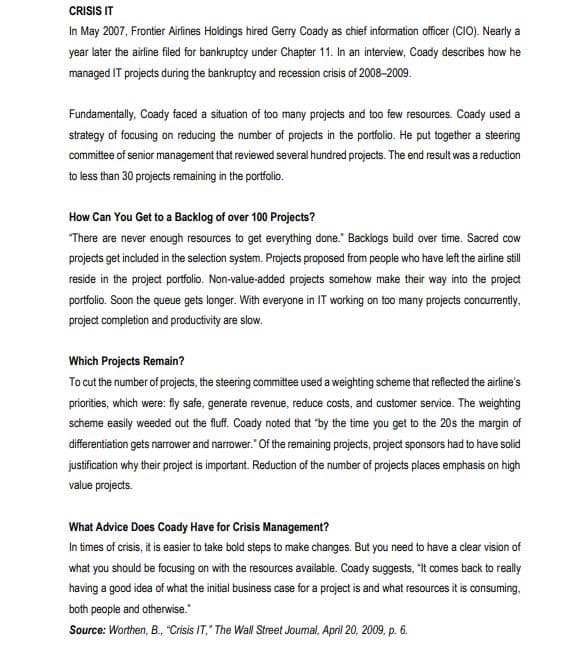3.1.Coady suggests, “It comes back to really having a good idea of what the initial business case for a project is and what resources it is consuming, both people and otherwise.” List and explain any TEN (10) components that are included in a business case. 3.2. Apart from the Business Case, stakeholder analysis is performed during the initial phases of a project. Briefly discuss the concept of stakeholders in Project Management in terms of external and internal stakeholders. Provide at least three examples under each category. 3.3.“With everyone in IT working on too many projects concurrently, project completion and productivity are slow.” Briefly explain how Coady might use Human Resource planning to manage project resources. 3.4.How can Coady make use of Resource Histograms and Staffing Management Plans to resolve the ongoing problems?
3.1.Coady suggests, “It comes back to really having a good idea of what the initial business case for a
project is and what resources it is consuming, both people and otherwise.” List and explain any TEN
(10) components that are included in a business case.
3.2. Apart from the Business Case, stakeholder analysis is performed during the initial phases of a
project. Briefly discuss the concept of stakeholders in Project Management in terms of external and
internal stakeholders. Provide at least three examples under each category.
3.3.“With everyone in IT working on too many projects concurrently, project completion and productivity
are slow.” Briefly explain how Coady might use Human Resource planning to manage project
resources.
3.4.How can Coady make use of Resource Histograms and Staffing Management Plans to resolve the
ongoing problems?

Step by step
Solved in 4 steps









